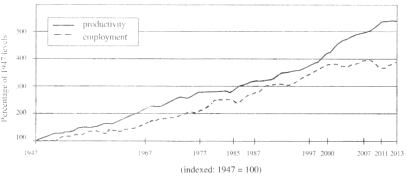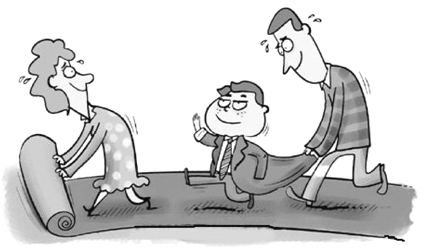题目内容
【题目】When I was little, Friday’s night was our family game night. After supper, we would play card games of all sort in the sitting room. As the kid, I loved to watch cartoons, but no matter how many times I asked to watching them, my parents would not to let me. They would say to us that playing card games would help my brain. Still I unwilling to play the games for them sometimes. I didn’t realize how right my parents are until I entered high school. The games my parents taught me where I was a child turned out to be very useful later in my life.
【答案】When I was little, ![]() night was our family game night. After supper, we would play card games of all
night was our family game night. After supper, we would play card games of all ![]() in the sitting room. As
in the sitting room. As ![]() kid, I loved to watch cartoons, but no matter how many times I asked to
kid, I loved to watch cartoons, but no matter how many times I asked to ![]() them, my parents would not
them, my parents would not ![]() let me. They would say to
let me. They would say to ![]() that playing card games would help my brain. Still I
that playing card games would help my brain. Still I ![]() unwilling to play the games
unwilling to play the games ![]() them sometimes. I didn’t realize how right my parents
them sometimes. I didn’t realize how right my parents ![]() until I entered high school. The games my parents taught me
until I entered high school. The games my parents taught me ![]() I was a child turned out to be very useful later in my life.
I was a child turned out to be very useful later in my life.
【解析】这是一篇记叙文。文章讲述了作者的个人经历。小时候周五夜晚家长不允许作者看卡通片,而是让他和他们一块儿玩扑克牌游戏。长大后作者才明白,这些纸牌游戏在后来的生活中很有用。
第一处:考查名词。名词作定语,往往表明被修饰名词的时间、地点、类别、目的或用途、材料或来源等。名词所有格作定语则强调与被修饰的词的所有关系或表示逻辑上的谓语关系。此处表示“星期五晚上”,并不是所有关系,故把Friday’s改为Friday。
第二处:考查名词单复数。all表示三者或三者以上,后用名词复数。故把sort改为sorts。
第三处:考查冠词。这里表示“作为一个孩子”,a用在表示泛指的单数名词前,the表示特指。故把the改为a。
第四处:考查动词不定式。句意:无论我要求多少次要去看(卡通片)。用不定式表示目的。故把watching改为watch。
第五处:考查情态动词。would后跟动词原形,故把to删除。
第六处:考查代词。句意:他们会对我说玩纸牌有助于大脑。偷换人称代词,是对“我”说,前面提到的I,而不是we。故把us改为me。
第七处:考查固定搭配。be unwilling to do sth.意为“不愿意做某事,不情愿做某事”。本文介绍的是过去的情况,故用过去时。所以在unwilling前加was。
第八处:考查介词。play the games with sb.表示“和某人一块玩游戏”,故把for改为with。第九处:考查时态。根据上下文语境可知此处要用一般过去时。故把are改为were。
第十处:考查宾语从句的连接词。句意:当我是个孩子的时候我父母教给我的纸牌游戏在我日后的生活中证明非常有用。宾语从句连接词并不是表示地点状语,而是时间状语。故把where改为when。
点晴:名词作定语与名词所有格作定语的区别。一般来说,名词作定语通常说明被修饰的词的性质,而名词所有格作定语则强调对被修饰的词的所有(权)关系或表示逻辑上的谓语关系。“the Party members(党员)”中,名词定语表示members的性质;“the Party’s calls(党的号召)”中,Party具有动作发出者的作用,calls虽然是名词,却具有动作的含义。a student teacher实习教师,a student’s teacher一位学生的老师。

 名师导航单元期末冲刺100分系列答案
名师导航单元期末冲刺100分系列答案 名校名卷单元同步训练测试题系列答案
名校名卷单元同步训练测试题系列答案【题目】
Free Online Creative Writing Workshop Suitable for the students of all Levels Dream of writing poetry, short stories, or novels? Ever watched a movie or a play and felt the desire to write a script of your own? If so, take our course online. Not only will we bring you techniques all forms of creative writing need most, we will also touch on the challenges and techniques that make your writing unique while getting your brain—and your hand—moving. Lesson 1: Small Steps As a student of this course, and as a creative writer, you will be writing. Decide where your words will go. Will you write longhand or will you type your words on a keyboard?
★ Complete Assignment: An Introduction ★ Complete: Assignment 1: Starting Small ★ Complete Exam: Lesson 1: Small Steps Lesson 2: Getting Out of Your Own Way If you long to write creatively, but you have a hard time getting started, you are not alone. There are far more people in the world who wish they were writers than those who actually write.
★ Review 2 Articles: Being Held Back by Your Fear of Writing? Online Writing Groups and Writing Communities ★ Complete: Assignment 2: Combatting Fear ★ Complete Exam: Lesson 2: Getting Out of Your Own Way |
Student recommendations “Great job. I especially enjoyed the opportunity to learn about and try some writing experiences I’d never thought I might like.” -Dot S. “The writing assignments and the instructor feedback were most helpful. I have taken two classes from this instructor, and I learned a great deal in both.” -Karen R. “The course had many suggested activities and exercises. The more of these I did the better experience I had with each lesson.” -Mel T. |
【1】What is the passage designed for?
A. Introducing some writing skills to children.
B. Attracting more students to attend the course.
C. Persuading students to write more creatively.
D. Arousing the children’s enthusiasm in literature.
【2】What problem can Lesson 2 help people to solve?
A. Writing longhand. B. Finishing assignments.
C. Being afraid of writing. D. Being too shy to join groups.
【3】The student recommendations make the course more .
A. convincing B. challenging
C. recognizable D. practical

